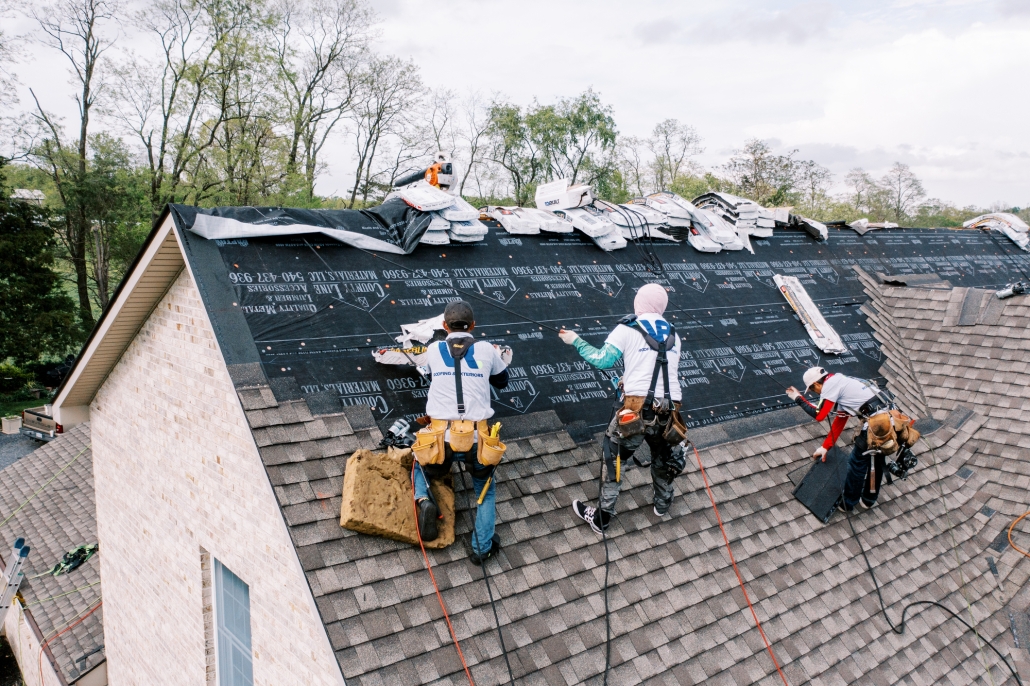The Advantages of Dealing With Gainesville FL Roofing Companies
The Advantages of Dealing With Gainesville FL Roofing Companies
Blog Article
Ideal Practices for Ensuring Correct Roofing Air Flow
A well balanced intake and exhaust air vent proportion, commonly 1:300, plays a critical duty, with intake vents preferably put at the lower edge of the roofing system for cool air entry and exhaust vents at the peak for warm air departure. Maintaining insulation away from vents is essential to prevent air movement limitation.
Understand Air Flow Basics
Properly recognizing ventilation essentials is important for ensuring the longevity and performance of roof. Effective ventilation reduces wetness build-up and temperature level extremes in the attic room, both of which can bring about significant architectural damage over time. A well-ventilated roof covering helps in stopping common problems such as mold growth, wood rot, and ice dams, which can endanger the honesty of the roof covering products and the underlying frameworks.
The primary objective of ventilation is to help with the motion of air, allowing for a constant exchange between the interior and exterior atmospheres. This equilibrium is accomplished via a mix of consumption and exhaust vents that collaborate to preserve ideal airflow. Consumption vents, normally situated along the eaves or soffits, allow fresh air to get in the attic room, while exhaust vents, typically positioned at or near the roofing system ridge, allow warm, damp air to run away.
Trick variables affecting the performance of roof covering air flow consist of correct positioning, ample sizing, and guaranteeing that both intake and exhaust vents are unhampered. Regular evaluation and maintenance are vital to identify potential clogs, damages, or inefficiencies in the air flow system, therefore securing the roof's performance and sturdiness.
Kinds Of Roofing System Vents
Roof vents play an essential function in preserving effective attic air flow and, by extension, the overall health of the roof system. Numerous kinds of roof covering vents are readily available, each with one-of-a-kind benefits tailored to details roof needs.

Soffit vents are mounted under the eaves and work in tandem with roof covering vents to make sure a balanced consumption and exhaust system. By permitting cooler air to get in from below, soffit vents assist in the expulsion of warm air via upper vents. Gable vents, located on the outside wall surfaces of the attic, offer one more reliable option, especially in homes with gable roof coverings.
Evaluate Your Existing Air Flow

Next, consider the age and condition of your roof covering materials and ventilation parts. Older systems might not conform with present building ordinance or might have weakened with time, minimizing their effectiveness. Conduct a complete assessment to determine any kind of indications of damage, such as corrosion, damages, or voids that could additional reading compromise the system's performance.
Additionally, determine the attic temperature level and humidity levels. High temperatures and humidity can show poor ventilation.
Installment Best Practices
Efficient installment of roof covering air flow systems is paramount for guaranteeing optimum performance and long life. Proper installation starts with understanding the specific air flow requirements of the roofing system and the structure it covers. This includes determining the proper proportion of intake to tire vents, commonly sticking to the 1:300 policy, which stipulates one square foot of ventilation for each 300 square feet of attic flooring area.

The positioning of vents is equally critical. Intake vents must be installed at the roof's reduced side, typically in the soffits, to allow trendy air to enter. Exhaust vents, on the other hand, ought to be installed near or at the roof's peak to help with the leave of warm, moist air. This develops a natural airflow that assists keep temperature level and moisture equilibrium within the attic room area.
Seal all air vent connections meticulously to stop air leakages and prospective water infiltration. Use premium products and comply with manufacturer guidelines to ensure durability and effectiveness. Additionally, incorporating ridge vents with baffles can considerably improve air movement performance by protecting against wind-driven rain and snow from going into the attic room.
Inevitably, accurate installment of roof covering air flow systems minimizes possible look at this site concerns such as mold and mildew development, ice dams, and architectural damage, guaranteeing the roofing's honesty and the structure's overall health and wellness.
Normal Maintenance Tips
Consistency in upkeep methods is essential to you could try this out making sure the lasting efficiency of roof covering air flow systems. During these assessments, make certain that vents are cost-free of particles, nests, and various other blockages that could hamper air movement.
Cleaning the vents is one more vital task. Use a soft brush or a vacuum to get rid of dirt and debris from consumption and exhaust vents. Be mindful not to harm the vent screens or louvers throughout the procedure. In addition, examine the attic room for any type of signs of water damage, which might compromise the stability of the roof.
Proper insulation is similarly important. Ensure that attic insulation does not block the vents, as this can badly restrict airflow. If any insulation has actually changed or settled, rearrange or change it to maintain an efficient barrier.
Lastly, change any damaged or missing out on components without delay. Broken vents, broken shingles, or tatty flashing can all add to poor air flow and ought to be addressed right away. Routine upkeep makes sure that the roof covering air flow system functions ideally, thereby expanding the lifespan of the roofing system itself.
Final Thought
Ensuring appropriate roofing ventilation is critical for maintaining the performance and sturdiness of a roof. Adherence to the 1:300 intake and exhaust air vent ratio, coupled with the calculated positioning of vents, is necessary. Routine semiannual assessments, debris cleansing, and making certain insulation does not block airflow are crucial techniques. Applying these finest methods will certainly promote a well-ventilated roof system, thus reducing potential problems associated with moisture accumulation and too much warm, inevitably lengthening the roofing system's life expectancy.
A balanced consumption and exhaust air vent proportion, frequently 1:300, plays a pivotal duty, with intake vents preferably put at the reduced side of the roof for great air access and exhaust vents at the peak for cozy air leave. Consumption vents, commonly situated along the soffits or eaves, allow fresh air to enter the attic room space, while exhaust vents, typically situated at or near the roof ridge, make it possible for hot, damp air to leave.
Soffit vents are set up under the eaves and work in tandem with roof covering vents to make sure a balanced consumption and exhaust system. By permitting cooler air to get in from below, soffit vents help with the expulsion of warm air with top vents. Adherence to the 1:300 consumption and exhaust vent ratio, paired with the critical positioning of vents, is necessary.
Report this page